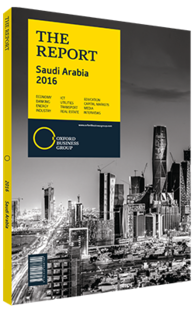Rapid expansion of ATM and card services driving growth in Saudi Arabia's consumer banking segment
The presence of 12 locally licensed commercial banks and the more recent arrival of 10 regional and global institutions, makes for a competitive banking sector in Saudi Arabia. Visibility is important when it comes to tapping into the Kingdom’s growing bankable population, and technology is playing a central role in the battle for market share. In the crowded retail space branch networks play an important part in this, as do the rapidly rising number of ATM machines that have increased the points of interaction between banks and customers in remote rural areas.
ATMs
According to the Saudi Arabian Monetary Agency (SAMA), in 1991 there were just 462 ATMs in the country. This had grown to 2234 by the turn of the century, and in 2015 the number of ATMs operated by domestically licensed banks had reached 17,233.
Banks are also investing in a new breed of ATMs, which offer advanced, non-traditional self-service options and, in some cases, the ability to communicate directly with a live agent. The anticipated expenditure on new ATM technology has attracted international infrastructure providers to the Saudi market. Some of them, such as tech company NCR, have entered directly, while in other instances they have sought partnerships with local firms, such as that formed by Germany’s Wincor Nixdorf and Riyadh-based Abana.
From the customer’s perspective, these developments have brought benefits in the form of higher levels of service and easier access to cash and assistance. NCR, for example, has joined with The Saudi Investment Bank to introduce its NCR SelfServ dual cashpoint, which allows customers to withdraw and deposit cash via an interactive teller capable of accepting and processing cheques, while also enabling the remote teller to immediately cash cheques at any time. Interactive teller technology rolled out on ATMs across the sector, meanwhile, has enabled customers to complete most typical bank transactions 24 hours a day, without the need to enter a branch.
Rise Of Plastic
The use of debit and credit cards has grown alongside this expansion of banking infrastructure. In 1991, when ATMs were still a relative novelty, 553,000 cards had been issued by Saudi Arabian lenders, according to SAMA. By 2000 this had increased to 4.78m, and in 2015 the number of cards circulating had reached 22.5m. Despite this healthy growth rate, the card channel remains relatively untapped, and promises to be an interesting area in the battle for market share over the coming years.
Part of the rationale for the optimism in this segment is the low number of credit cards in circulation, thanks largely to the prohibition on interest in sharia law. Card channel growth has been driven by debit cards, which according to a 2013 report by HSBC accounted for around 90% of the payment cards in circulation. The result of this has been the emergence of an anomaly in banking systems: Islamic banks tend to be more retail focused than other institutions in the commercial banking sphere, yet they have until relatively recently been denied one of the most globally popular credit instruments in the retail segment.
However, this is changing as advances in sharia-financial scholarship have allowed even the most stringently compliant institutions to add credit cards to their offering. To remain in compliance with sharia law, this is usually accomplished by adopting one of three card arrangements, through which the bank provides credit to the cardholder and charges a monthly or yearly usage fee; instantly purchases an item paid for by a customer’s card before selling it back to the customer at a marginally higher price; or enters into a lease-purchase agreement with the cardholder and retains the title to the item until the customer makes the final payment. These sharia-compliant frameworks have allowed major card vendors to comfortably enter what would otherwise have been a challenging market, providing their sharia-compliant offerings with domestic institutions.
You have reached the limit of premium articles you can view for free.
Choose from the options below to purchase print or digital editions of our Reports. You can also purchase a website subscription giving you unlimited access to all of our Reports online for 12 months.
If you have already purchased this Report or have a website subscription, please login to continue.

